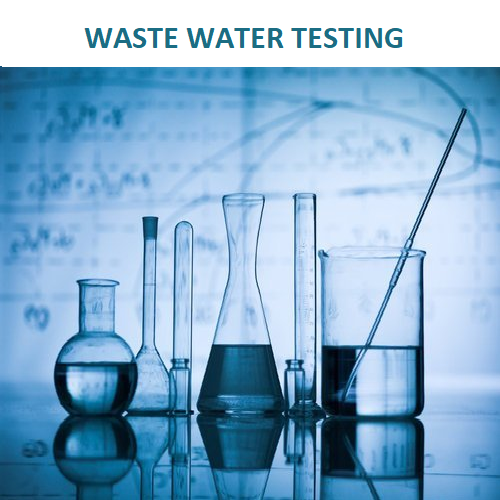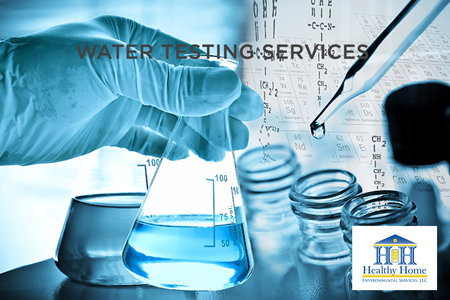Professional Well Water Testing Services: Obtain Accurate Outcomes Quick
Professional Well Water Testing Services: Obtain Accurate Outcomes Quick
Blog Article
Discover What Is Consisted Of in Water Examining and How It Makes Sure Safe Alcohol Consumption Water
Understanding the ins and outs of water testing is critical in making certain the top quality and safety and security of our drinking water. Through a precise examination of physical, chemical, and microbiological elements, water testing determines prospective pollutants that might present health risks. From the visibility of hefty steels to harmful microbes, each examination component plays a vital duty in keeping the integrity of our water supply. Advanced techniques like chromatography and spectrometry boost the accuracy of these analyses. Yet, exactly how do these processes equate right into the regulative structures that assure safety and security in our day-to-day intake?
Secret Parts of Water Testing
Water screening is a vital procedure that includes several key parts to guarantee the safety and quality of alcohol consumption water. One of the main elements is the analysis of physical attributes, consisting of odor, shade, and turbidity. These features can supply preliminary understandings into the water's problem and possible contamination sources. Additionally, making sure the pH equilibrium of water is vital, as it impacts the water's corrosiveness and the efficiency of disinfection procedures.
An additional considerable component includes microbiological analysis, where water examples are examined for the visibility of bacteria such as germs, viruses, and protozoa. If eaten, this analysis is vital to recognize organic dangers that could pose health and wellness threats. Chemical analyses are carried out to find organic and not natural compounds, such as hefty steels, nitrates, and pesticides, that might be existing in the water supply.

Finding Harmful Contaminants
Finding hazardous contaminants in alcohol consumption water is a basic aspect of safeguarding public health. Each type of pollutant poses distinctive wellness dangers, making their detection critical to make sure the water taken in by the public is risk-free.
Water testing for impurities is commonly carried out by governing companies and water utilities, employing a mix of field tasting and lab analysis. These assessments are designed to discover both normally occurring substances and anthropogenic toxins that might have gotten in the water system via farming overflow, industrial discharge, or aging infrastructure. Routine monitoring is crucial, as contamination levels can fluctuate because of environmental modifications, seasonal variants, or human activities.
The identification of damaging contaminants notifies necessary actions, such as water treatment interventions or public advisories, to alleviate threats. Early discovery is crucial to stop unfavorable wellness effects, ranging from gastrointestinal diseases to lasting conditions like cancer cells, therefore ensuring the continued safety of drinking water.

Chemical Analysis Strategies
In the realm of making sure safe drinking water, chemical analysis strategies play a pivotal role in determining and evaluating contaminants. These techniques are crucial for spotting a broad array of chemical materials, consisting of heavy metals, pesticides, and industrial toxins, which can pose substantial health risks.
Gas chromatography-mass spectrometry (GC-MS) is another vital method, particularly for natural substances. It divides complicated blends and determines volatile and semi-volatile natural compounds, guaranteeing that contaminants like benzene and toluene are within safe limitations. High-performance liquid chromatography (HPLC) is likewise made use of for non-volatile materials, consisting of specific chemicals and drugs.
Ion chromatography is employed to identify focus of anions and cations, such as nitrates and sulfates, which are critical in examining water quality. These chemical evaluation techniques collectively make sure that alcohol consumption water remains safe by detecting discrepancies from developed purity norms, thus safeguarding public health and wellness. Guaranteeing accuracy and precision in these tests is vital to keeping the honesty of water security analyses.
Microbiological Examining Techniques
Precise microbiological testing is essential for protecting public health by ensuring that Recommended Reading alcohol consumption water is without unsafe virus. This process includes finding and specifying microorganisms such as microorganisms, infections, and protozoa that may contaminate water materials. Usual pathogens include Escherichia coli, Giardia, and Cryptosporidium, each posing substantial wellness risks.
A number of methods are utilized in microbiological screening to recognize these risks. The membrane purification method is frequently utilized, entailing water passing via a filter that captures microorganisms, which are then cultured to determine their presence and concentration. The multiple-tube fermentation method allows the metrology of coliform bacteria utilizing a series of dilution and incubation actions.
Developments in technology have presented molecular strategies such as polymerase domino effect (PCR), which enables the quick and highly details discovery of virus by intensifying their hereditary material. Enzyme-linked immunosorbent assays (ELISA) also provide an approach to spot virus by determining certain healthy proteins or antigens.
These differed methods are essential for thorough water high quality evaluation, ensuring that water treatment procedures are effective which circulation systems preserve safety. By employing these microbiological testing methods, possible carcinogen can be recognized and alleviated promptly.

Relevance for Public Wellness
Guaranteeing the microbiological safety and security of alcohol the original source consumption water directly impacts public health by preventing the spread of waterborne diseases. Pathogens such as bacteria, viruses, and protozoa can lead to illnesses like cholera, dysentery, and intestinal infections (Water Testing Service). The implementation of detailed water screening methods is extremely important in determining and alleviating these risks, therefore safeguarding areas from possible outbreaks
Normal water testing not just identifies microbial impurities yet also evaluates chemical and physical specifications that might influence wellness. Excessive levels of nitrates or hefty metals such as lead can pose major wellness dangers, specifically to at risk populations like babies and pregnant ladies. By identifying these hazards early, water screening allows prompt interventions, guaranteeing the supply of water remains within risk-free consumption requirements.
Moreover, water screening plays a vital duty in preserving public self-confidence in municipal water systems. For plan makers and wellness authorities, the data derived from water screening informs choices on facilities investments and public health approaches, ensuring sources are routed where they are most required.
Verdict
Water testing works as a crucial device for making certain the safety and high quality of alcohol consumption water with extensive evaluation of its physical, chemical, and microbiological buildings. By discovering dangerous contaminants, such as heavy steels and chemicals, and utilizing innovative methods like chromatography and spectrometry, water screening facilitates the recognition look at this now of possible health and wellness risks. The implementation of strenuous screening methods is vital for maintaining compliance with safety standards, ultimately protecting public wellness and enhancing self-confidence in metropolitan water systems.

By identifying these threats early, water screening enables timely treatments, making certain the water supply stays within secure consumption requirements.
Water screening serves as a necessary system for making certain the safety and security and high quality of drinking water through thorough examination of its physical, chemical, and microbiological properties.
Report this page